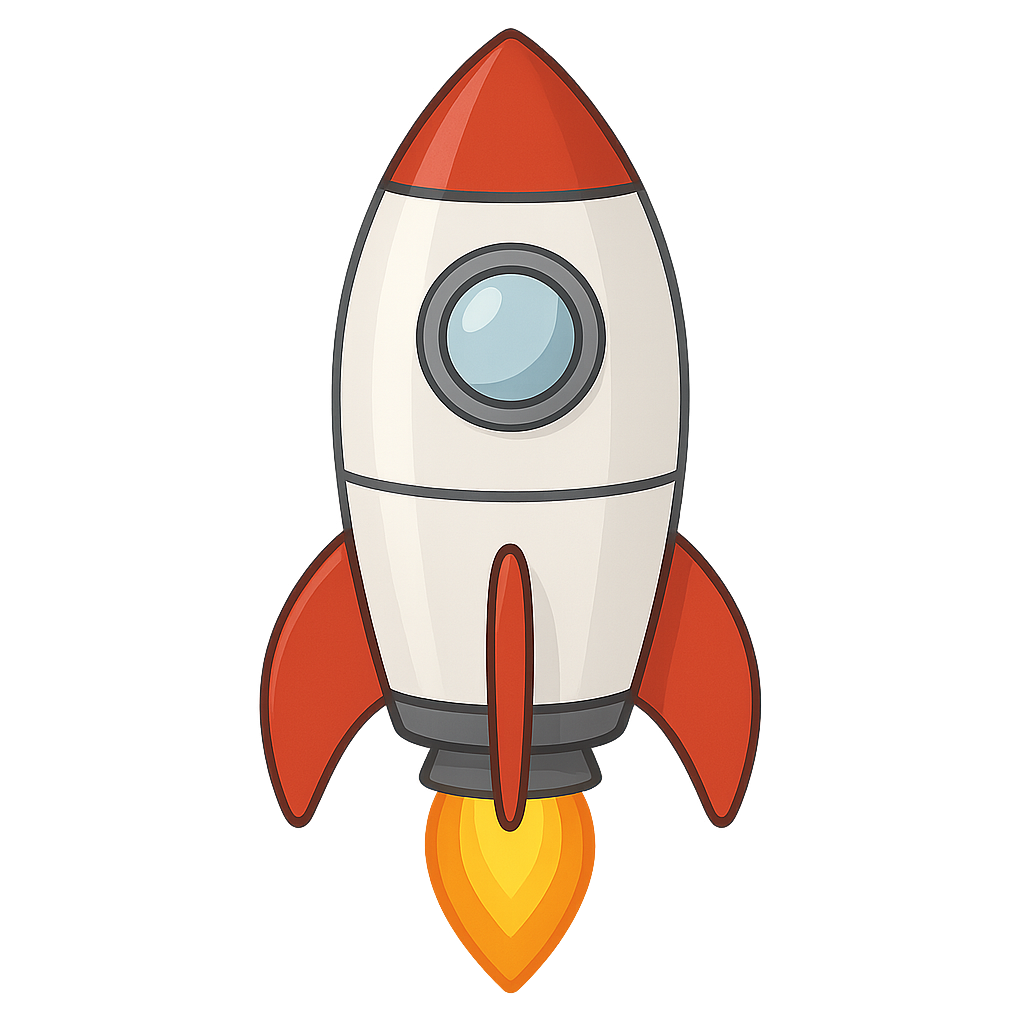A Rocket's Tale: My Journey to the Stars
Hello, my name is Space Rocket, and my story begins with a bang. Long, long ago, even before your great-great-grandparents were born, my oldest ancestors were wowing crowds in ancient China. You might know them as fireworks. They were simple, colorful bursts of light, but they held the secret to my power. The idea is quite easy, really. If you push a lot of hot, fiery gas out of one end of me very, very fast, I go zooming in the opposite direction. It’s like blowing up a balloon and letting it go. Whoosh. For centuries, that simple idea was just for fun, but I always knew I was meant for something more. I dreamed of leaving the bright blue sky behind and exploring the quiet, star-dusted darkness of space. I was born for adventure, and my fiery beginning was just a spark of what was to come.
My dreams couldn't take flight without brilliant human minds to shape me. One of the most important was a man named Robert H. Goddard. In the early 1900s, people thought he was just a daydreamer for believing I could reach the stars. But he never gave up. On March 16th, 1926, he launched the first version of me that used liquid fuel. It was a small flight, wobbly and short, like my very first baby steps. It didn't go very far, but it proved that the dream was possible. As the years went on, I started to grow up. Many clever engineers worked on making me bigger, stronger, and more powerful. A man named Wernher von Braun and his team imagined my mightiest form yet: the Saturn V. They designed me to be as tall as a skyscraper, with engines that could roar with the power of a thousand thunderstorms. I was no longer taking baby steps; I was getting ready to leap towards the Moon.
The world started to get very excited about space in the 1950s. It felt like a great race was beginning, and every country wanted to be the first to explore the cosmos. Then, on October 4th, 1957, a surprising sound came from the sky. It was a tiny, beeping cousin of mine called Sputnik 1, sent into orbit by the Soviet Union. Hearing its little beeps from so high above the Earth sent a shockwave of excitement and urgency across the planet, especially in America. Humans suddenly realized that my dream of traveling in space was not just a story anymore. It was real. This event lit a fire under the dreamers and engineers. A new organization called NASA was created, and they were given a very big job: to design and build a version of me that could complete the most amazing mission ever imagined, to carry people all the way to the Moon and bring them back safely.
My biggest, most important day finally arrived. As the Saturn V, I stood proudly on the launchpad, pointing toward the sky. It was July 16th, 1969. Inside my tip sat three brave astronauts: Neil Armstrong, Buzz Aldrin, and Michael Collins. I could feel the whole world holding its breath. The final countdown began. Ten... nine... eight... I felt a deep rumble begin in my base as my powerful F-1 engines ignited. Seven... six... five... The ground shook violently as I gathered my strength. Four... three... two... one... LIFTOFF. With a roar that shook the entire coast of Florida, I pushed against the Earth with all my might. The force was incredible as I climbed higher and faster, shedding parts of myself as my fuel was used up. My one and only job was to push my precious cargo out of Earth's gravity, and I did it perfectly. I sent them on their path, and on July 20th, 1969, I watched from afar as they took the first human steps on the Moon. My mission was a success.
My journey to the Moon was a giant leap, but the adventure is far from over. Today, my family has grown and become even more clever. I have cousins who are so smart they can fly to space and then fly back to land themselves perfectly upright, ready to be used again. I have other relatives who are deep space probes, traveling for years to send back amazing pictures of Jupiter, Saturn, and planets we've never seen up close. My story shows that when humans dream big and work together, anything is possible. I am more than just metal and fire; I am a tool for curiosity and a vessel for exploration. Looking up at the night sky, I know that our incredible adventure into the great unknown has only just begun.
Reading Comprehension Questions
Click to see answer
